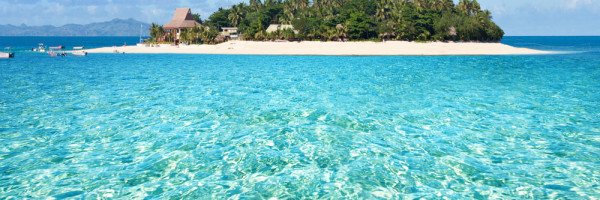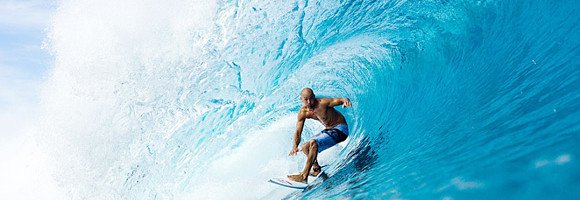Understanding UVA and UVB Rays in Fiji
When planning your sunbathing sessions in Fiji, it is essential to comprehend the types of ultraviolet (UV) rays you will be exposed to. UVA rays penetrate deeply into the skin and are primarily responsible for aging and long-term skin damage, while UVB rays are responsible for sunburn and are a significant factor in the development of skin cancer. In Fiji, the intensity of UV radiation is notably higher due to its geographical location and proximity to the equator.
New Zealanders are already familiar with the damaging effects of UV exposure, as they have one of the highest rates of skin cancer in the world. Thus, understanding the UV index is crucial when planning outdoor activities. The UV index in Fiji can reach extreme levels, particularly between 10 AM and 4 PM. It is advisable to check local UV forecasts and consider protective measures, especially during these peak hours. You can find more information about Fiji’s UV exposure on official tourism websites like Fiji Islands.
Best Times for Sunbathing in Fiji
While the allure of sunbathing in Fiji is undeniable, timing is crucial for maximizing relaxation while minimizing skin damage. The optimal times for sunbathing are usually early in the morning or late afternoon when the sun is less intense. The hours between 7 AM and 10 AM and after 4 PM are generally safer for sun exposure.
For New Zealand visitors, this might mean adjusting your daily schedule to enjoy the golden hours of Fiji’s sun. Imagine lounging on a beach while enjoying a refreshing drink, with the sun casting a warm glow. Early morning sunbathing can also be a peaceful experience, allowing you to enjoy the tranquility of the ocean before the crowds arrive. Additionally, late afternoon sessions provide the perfect backdrop for sunset views, making it a picturesque end to your day.
Protective Measures for Skin Health
Even during optimal sunbathing times, protecting your skin should be a top priority. Using broad-spectrum sunscreen with a high SPF is essential, regardless of the UV index. Remember to reapply every two hours and after swimming or sweating. For New Zealand visitors, bringing a familiar brand of sunscreen can provide peace of mind, as you may be more accustomed to their formulations.
Additionally, wearing protective clothing, wide-brimmed hats, and UV-blocking sunglasses can help shield your skin from harmful rays. Consider lightweight, breathable fabrics that are suitable for Fiji’s tropical climate. If you plan to spend extended periods outdoors, seek shade whenever possible, especially during peak sun hours.
By taking these protective measures, you can enjoy the sun while keeping your skin healthy. For more detailed information on sun protection in Fiji, check out resources available on Fiji Islands.
The Role of Hydration in Sunbathing
Staying hydrated is crucial when sunbathing in Fiji, as high temperatures and direct sunlight can lead to dehydration. For New Zealand visitors, it is vital to drink plenty of water before, during, and after sun exposure. Dehydration can not only affect your overall health but also impact your skin’s ability to recover from sun exposure.
Incorporating hydrating foods into your diet can also be beneficial. Tropical fruits such as watermelon, pineapple, and coconut water are excellent choices to keep your body hydrated and replenish lost electrolytes. These foods not only provide hydration but also add a refreshing element to your sunbathing experience.
Consider setting reminders to drink water regularly throughout the day, especially if you’re enjoying a cocktail or alcoholic beverages, which can lead to increased dehydration. Keep an eye on your body’s signals; if you feel thirsty or fatigued, take a break from the sun and hydrate. For more information on maintaining hydration while enjoying Fiji, visit Fiji Islands.
Sunbathing Etiquette in Fiji
Understanding the local culture and etiquette is essential for New Zealand visitors enjoying sunbathing in Fiji. Respect for the local customs and practices is vital to ensure a positive experience. Many Fijian beaches are public, but some may be associated with resorts or private properties. Always check for any guidelines or restrictions in place before setting up your sunbathing area.
Additionally, while sunbathing, consider keeping noise levels down to respect the tranquility of other beachgoers. Engaging with locals is encouraged, but be mindful of their personal space, especially if they are enjoying a quiet day by the beach. It’s also worth noting that Fiji has a strong cultural emphasis on modesty, so wearing appropriate swimwear and cover-ups when not in the water can show respect for the local customs.
By embracing these etiquettes, you can enhance your experience while sunbathing in Fiji. For further insights on Fijian culture and travel tips, check out Fiji Islands.
Alternative Activities During Peak UV Times
For New Zealand visitors who wish to enjoy Fiji without excessive sun exposure, numerous alternative activities are available during peak UV times. Engage in indoor activities such as visiting local markets, indulging in spa treatments, or participating in cooking classes to learn about Fijian cuisine.
Exploring the rich culture of Fiji can also be a rewarding experience. Consider visiting historical sites or participating in cultural events to deepen your understanding of the local traditions. Many resorts offer guided tours that can take you to nearby islands or through the lush landscapes of Fiji, allowing you to explore while avoiding the harsh sun.
Alternatively, you can opt for water-based activities such as snorkeling or paddleboarding during late afternoons, when the sun is less intense. This way, you can still enjoy the beauty of Fiji’s waters while minimizing UV exposure. For more ideas on activities to enjoy in Fiji, visit Fiji Islands.
Conclusion: Finding Balance in Sunbathing
Sunbathing in Fiji offers an incredible opportunity for relaxation and enjoyment, particularly for visitors from New Zealand. However, achieving a balance between soaking in the sun and protecting your skin is essential. By understanding the types of UV rays, optimal sunbathing times, and implementing protective measures, you can enjoy the beauty of Fiji while prioritizing your skin health.
Remember to stay hydrated, embrace local etiquette, and explore alternative activities to enrich your experience. With careful planning and awareness, your time in Fiji can be both enjoyable and safe. For more information on sunbathing in Fiji and to plan your trip, check out Fiji Islands.
FAQs
What are the optimal times for sunbathing in Fiji?
The best times for sunbathing in Fiji are generally early morning before 10 AM and late afternoon after 4 PM. During these hours, UV exposure is lower, allowing visitors to enjoy the sun while minimizing the risk of skin damage.
How does Fiji’s UV exposure compare to New Zealand?
Fiji experiences higher UV exposure than New Zealand due to its closer proximity to the equator. This means that even on overcast days, the UV levels can be significant, making it crucial for visitors to be mindful of sun protection.
What precautions should I take while sunbathing in Fiji?
To protect your skin while sunbathing in Fiji, it’s essential to apply a broad-spectrum sunscreen with at least SPF 30, reapply every two hours, and wear protective clothing or a wide-brimmed hat during peak sun hours.
Are there specific times of year when UV exposure is higher in Fiji?
Yes, UV exposure in Fiji tends to be higher during the summer months, from November to March. During this period, visitors should be particularly cautious and consider adjusting their sunbathing schedule accordingly.
Can I still get a tan if I follow these sunbathing guidelines?
Absolutely! By sunbathing during the optimal times and taking necessary precautions, you can still achieve a healthy tan while minimizing the risk of sunburn and long-term skin damage.
What are the signs of excessive UV exposure?
Signs of excessive UV exposure include redness, swelling, pain, and peeling skin, which indicate sunburn. If you experience any of these symptoms, it’s important to seek shade immediately and apply soothing aloe vera or after-sun lotion.
Should I consider my skin type when sunbathing in Fiji?
Yes, different skin types have varying sensitivities to UV exposure. Fair-skinned individuals may need to take more precautions and limit their sun exposure, while those with darker skin may have more natural protection but should still use sunscreen to prevent skin damage.
References
- Fiji Islands Official Website – A comprehensive resource for travelers to Fiji, offering insights on weather, activities, and health tips for enjoying the sun safely.
- New Zealand Ministry of Health – Sun Safety – Provides guidelines on safe sun exposure and tips for preventing skin damage, particularly relevant for New Zealand visitors to Fiji.
- Cancer Council Australia – Sun Safety – Offers expert advice on sun safety and the importance of balancing sun exposure with skin protection.
- NHS – Sun Safety – Features practical tips for enjoying the sun responsibly, including optimal times for sunbathing and skin protection strategies.
- Fiji Meteorological Service – Provides up-to-date weather information and forecasts, helping visitors plan their sunbathing activities effectively.







